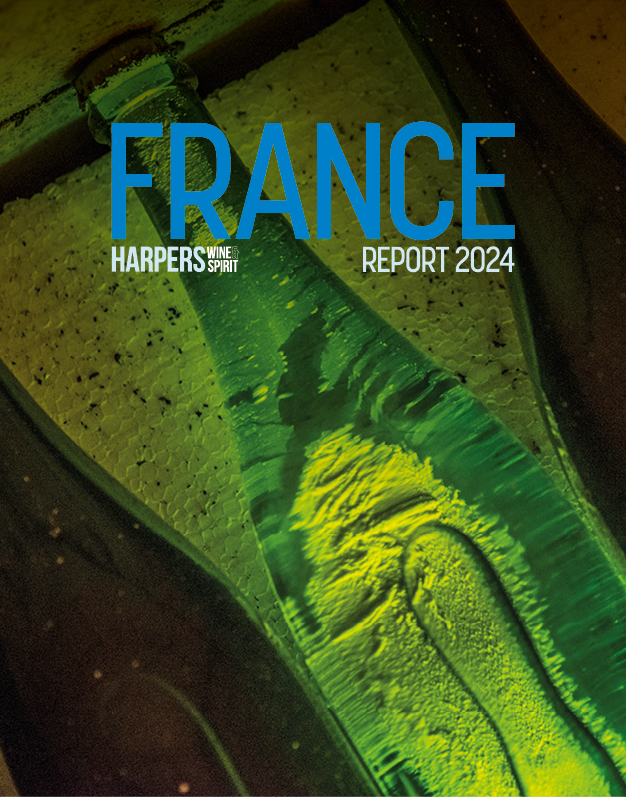
Why the trade must step up to sustainability
Sustainability isn’t an optional extra for the wine trade. It’s a moral choice in that we can’t expect the next generation to pick up our tab. I had a friend at university who regularly used to come out to drink with us at the student union with just a single pound coin in his pocket. (Those were the days when one pound was enough to buy a pint of beer at discounted student prices). So he’d go and buy his pint and then rely on the rest of us to fund his drinking for the rest of the evening. He was always apologetic, and there was always an excuse. But I don’t think I can remember him ever paying his way.
The wine trade is a bit like this at the moment. Unless we are truly sustainable – and true sustainability is what Geoff Thorpe of Riversun Nurseries in New Zealand describes as being able to do what we do now for 500 years – then we are expecting someone else to pick up our tab. And it’s not OK to expect future generations to pay for what we are doing now, no matter how good our excuses are.
The slight complication is that financial sustainability is definitely an element of sustainability: as the saying goes, you can’t be green when you are in the red. But it’s up to us to find out how to make it work financially, because it isn’t moral to carry on degrading soil quality, fail to address carbon-footprint issues and deplete environmental resources that are not renewable. The wine trade must avoid the temptation to start talking about a sustainability that isn’t truly sustainable – that’s just greenwashing. Instead, our discussions on sustainability must be honest, and must encompass all aspects of the production, shipping and sale of wine.
So, why is sustainability suddenly so current? It is all being brought into focus by climate chaos. The sensitivity of the varieties of wine grapes to small changes in climate makes wine a test case for climate change. Indeed, historical harvest records represent a good proxy measure that allows us to quantify historical variation in climate in the absence of recorded temperature data (they didn’t have thermometers in the 14th century, but they did record harvest dates in some regions), and also how much things have warmed up over time.
The evidence is clear that wine regions worldwide are getting hotter. But more than this: the climate is becoming less predictable, hence a preference for the term ‘climate chaos’ over that of climate change. In the face of this, we need to build resilience into vineyards; and one way of doing this is by implementing regenerative approaches in vineyard management.
↓
Regenerate and rejuvenate
Regenerative farming is based on a branch of science called agroecology, made famous by a book by a Chilean-born California-based researcher called Miguel Altieri. Now we are seeing this branch of agronomy applied to viticulture and it’s an exciting development. Seeing the vineyard as an ecosystem, and understanding the interactions between all living components, including what’s going on under the ground, has the potential to create truly sustainable vineyards which, in addition to requiring fewer inputs, will also build up and lock in organic material, which means carbon.
It’s vineyards where the real gains can easily be made in the wine industry in terms of sustainability and reducing carbon footprint. If components from the regenerative viticulture toolkit are implemented intelligently – bearing in mind that all wine regions are different – this means environmental plus financial sustainability. It also promises to sequester carbon in soils, and with 7.5 million hectares of vines across the globe, even though this is just a small proportion of agricultural soils, regenerative approaches could make quite a difference.
But this focus on vineyards shouldn’t be at the expense of decarbonising the logistics chain as much as possible. The first target that needs to be dealt with is the overuse of glass bottles. Glass is a great way to preserve wine’s qualities, but a really bad way to ship it, because it’s heavy and breakable, and the latter property necessitates hefty packaging. While shipping is much more carbon footprint-friendly than road transport, it doesn’t make much sense for most wines to ship as a finished product.
Bottling bulk-shipped wine in market saves on carbon footprint and also shipping costs. The only issue to be aware of is taking jobs away from the production country, which can be a social problem.
Then, we have the issue of bottle weight. Lightweighting wine bottles has been a success. While a few producers still insist on silly heavy bottles for their top wines, most producers now realise that lighter bottles are the right choice.
However, for some markets such as China, a heavy bottle does make a wine seem more valuable. Then we are talking about financial sustainability, which is a legitimate discussion. If moving to a lighter bottle diminishes your wine in the eyes of the consumer, to the point where they will pay less, it is suddenly a much more nuanced discussion.
↓
Reuse, reduce, rethink
Perhaps for some segments of the market we need a rethink? There are some arguments favouring the reuse of bottles rather than recycling. The problem with recycling is that there is a limited demand in the UK for green or brown glass, which is what most wine bottles are made of. And recycling has quite a high carbon footprint, even where there is a demand for recycled glass. The pioneering work of Sustainable Wine Solutions in the UK with bottle reuse and kegging has been inspirational. Is it scaleable? Getting wine out of single-use glass is a key priority for sustainability. The challenge is to do it in such a way that avoids commoditisation of wine, thus stripping it of profitability.
How do you maintain a branded, profitable space while at the same time abandoning packaging that is usually used to communicate this brand? This is one of the key questions.







